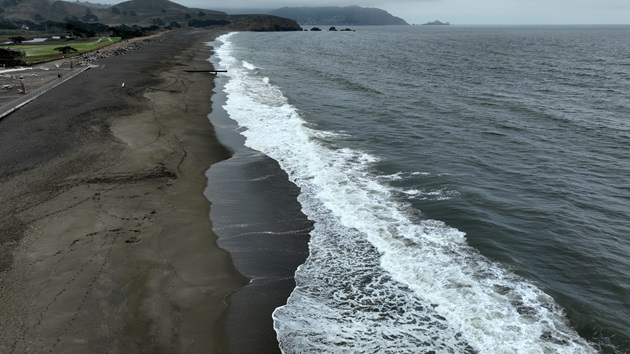
(LONDON) — The massive magnitude 8.8 earthquake that struck off Russia’s Kamchatka Peninsula last week has triggered the activity of seven volcanoes in the area, according to the Institute of Volcanology and Seismology of the Far Eastern Branch of the Russian Academy of Sciences (RAS).
The RAS said this is the first time in almost 300 years that seven volcanoes erupted at once in the region. Director of the institute Alexey Ozerov described the situation as an “extremely rare phenomenon that can be described as a parade of volcanic eruptions.”
The magnitude 8.8 earthquake that struck late on July 29 caused several aftershocks, including a magnitude 6 aftershock in the Pacific Ocean near Kamchatka at 6 a.m. local time Tuesday morning, according to the Kamchatka branch of the Unified Geophysical Service of the Russian Academy of Sciences.
Among those erupting is the Klyuchevskoy Volcano, which the Kamchatka Volcanic Eruption Response Team reported to be spewing ash on Tuesday.
The earthquake on July 29 has now caused the southern part of the Kamchatka Peninsula to shift southeastward, according to the local branch of the Russian Academy of Sciences’ Unified Geophysical Service.
The Kamchatka branch of the Federal Research Center “United Geophysical Service of the Russian Academy of Sciences have calculated the surface of the Earth shifted to the southeast, with the greatest shift occurred in the south of the peninsula reaching almost 2 meters.
The greatest shift occurred in the south of the peninsula, movement that is comparable to the horizontal displacement that resulted from the 2011 earthquake in Japan. Seismologists acknowledge the peninsula has “shifted somewhat more modestly” although they do not specify the exact amount.
The eruptions follow the volcanic activity of the Krasheninnikov Volcano that saw lava flow in the last week for the first time in nearly 600 years. Local officials said the last lava flow was recorded in 1463.
A Russian seismologist told local media that there is a direct connection between last week’s powerful earthquake and increased volcanic activity in Kamchatka.
“We attribute the eruptions to the earthquake, which activated the magmatic foci and provided them with additional energy,” Alexey Ozerov, a corresponding member of the Russian Academy of Sciences and director of the Institute of Volcanology and Seismology, told TASS, a state-affiliated media in Russia.
The Krasheninnikov volcano is located less than 150 miles away from the epicenter of the earthquake that struck off the east coast of the Russian peninsula on July 29.
The intense quake was one of the most powerful earthquakes ever recorded, and the world’s largest since 2011. It spurred tsunmai warnings from Japan to Hawaii and the West Coast of the United States.
Volcanic activity is common for the Kamchatka Peninsula, which is home to 29 active volcanoes, according to the U.S. Geological Survey, with three of those currently erupting previously laying dormant according to the RAS
Massive eruptions began at 6 a.m. local time on Sunday, prompting the evacuation of personnel in the area, according to the Kronotsky Nature Reserve’s website.
The regional Ministry of Emergency Situations said there are no settlements along the ash plume’s path of the Klyuchevskoy and said there are no registered tourist groups in the volcano’s vicinity.
Copyright © 2025, ABC Audio. All rights reserved.

